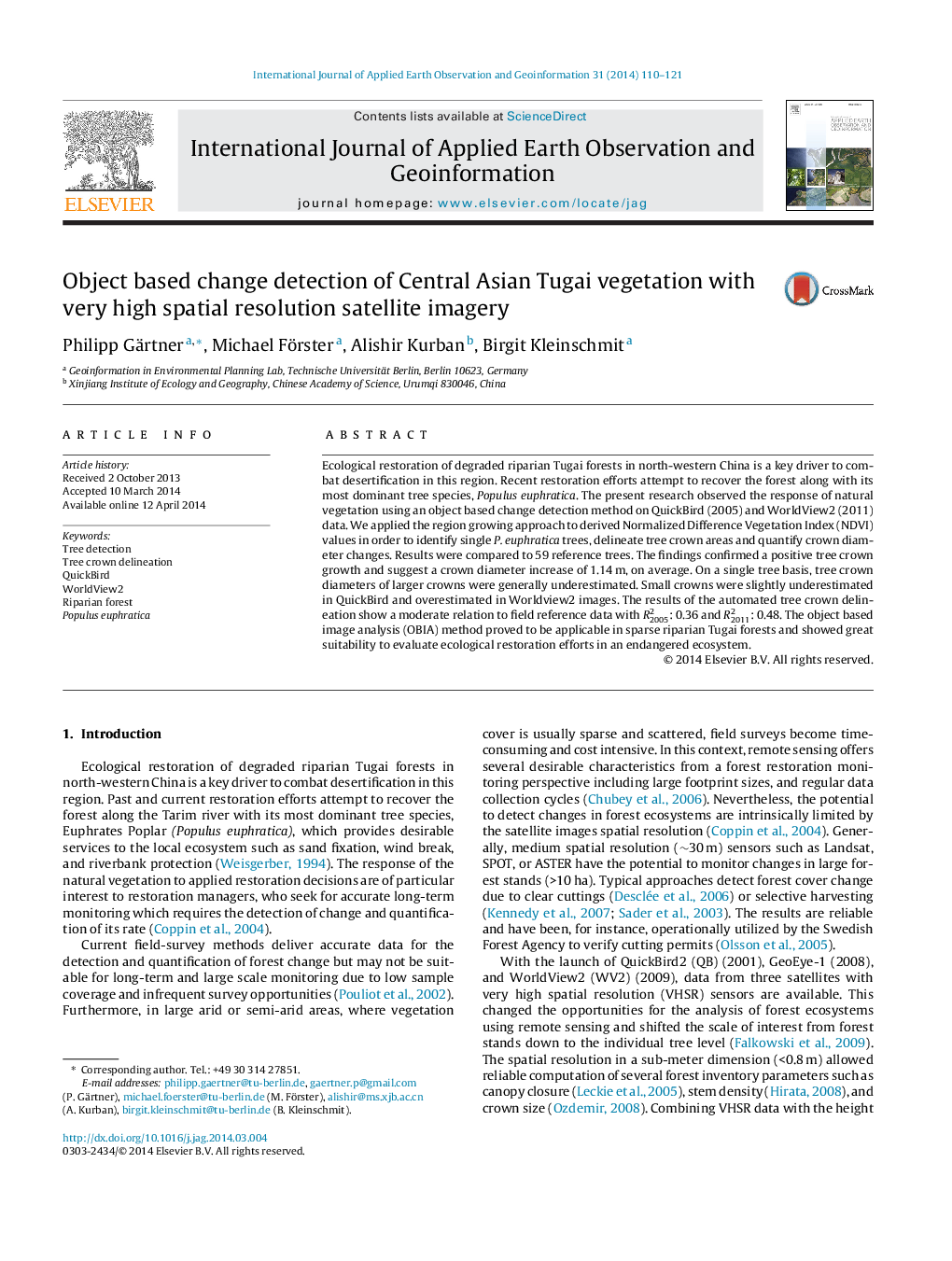| Article ID | Journal | Published Year | Pages | File Type |
|---|---|---|---|---|
| 6348905 | International Journal of Applied Earth Observation and Geoinformation | 2014 | 12 Pages |
Abstract
Ecological restoration of degraded riparian Tugai forests in north-western China is a key driver to combat desertification in this region. Recent restoration efforts attempt to recover the forest along with its most dominant tree species, Populus euphratica. The present research observed the response of natural vegetation using an object based change detection method on QuickBird (2005) and WorldView2 (2011) data. We applied the region growing approach to derived Normalized Difference Vegetation Index (NDVI) values in order to identify single P. euphratica trees, delineate tree crown areas and quantify crown diameter changes. Results were compared to 59 reference trees. The findings confirmed a positive tree crown growth and suggest a crown diameter increase of 1.14Â m, on average. On a single tree basis, tree crown diameters of larger crowns were generally underestimated. Small crowns were slightly underestimated in QuickBird and overestimated in Worldview2 images. The results of the automated tree crown delineation show a moderate relation to field reference data with R20052: 0.36 and R20112: 0.48. The object based image analysis (OBIA) method proved to be applicable in sparse riparian Tugai forests and showed great suitability to evaluate ecological restoration efforts in an endangered ecosystem.
Related Topics
Physical Sciences and Engineering
Earth and Planetary Sciences
Computers in Earth Sciences
Authors
Philipp Gärtner, Michael Förster, Alishir Kurban, Birgit Kleinschmit,
